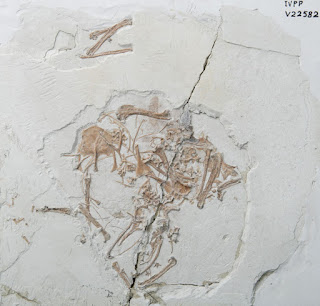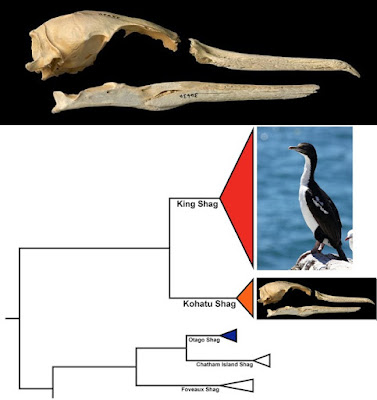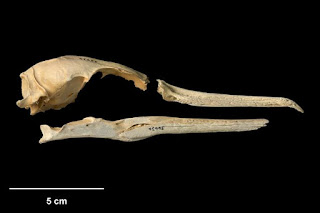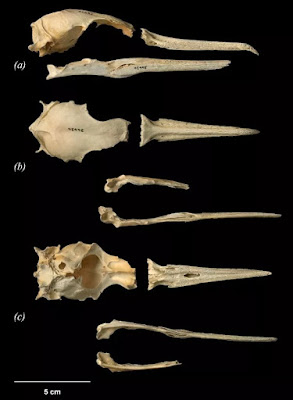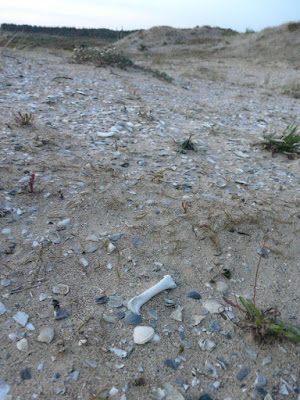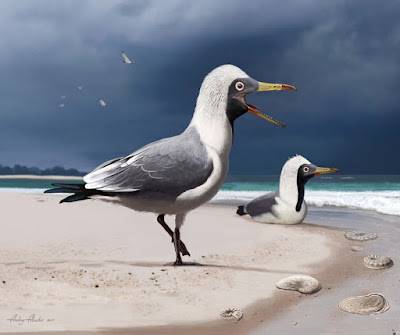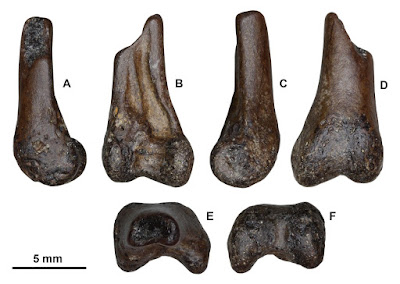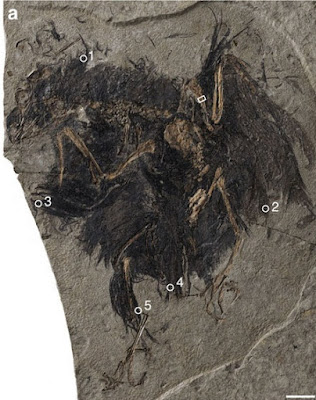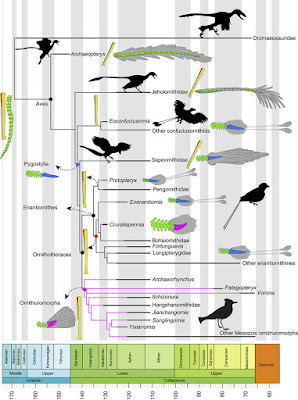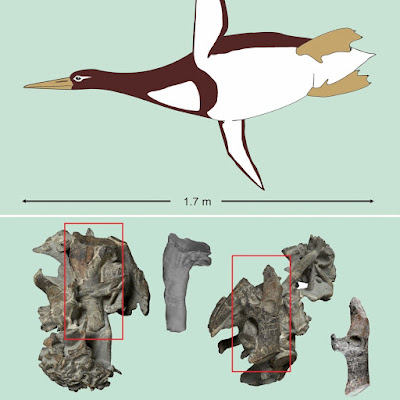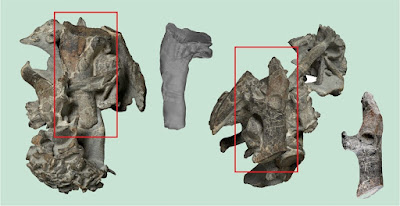 |
| Piscivorenantiornis inusitatus Wang & Zhou, 2017 |
ABSTRACT
A fish-eating enantiornithine bird with a gastric pellet composed of fish bones has recently been reported from the Lower Cretaceous Jiufotang Formation of Liaoning Province, northeastern China. Along with other discoveries, this specimen reveals that distinct features of modern avian digestive system were well established in those early birds. On the basis of a detailed anatomical study presented here, we show that this fish-eating enantiornithine bird represents a new taxon, Piscivorenantiornis inusitatus, gen. et sp. nov. The well-preserved elements of the skull, neck, sternum, and pelvis further enrich our understanding of the morphological diversity in early enantiornithines. Most notably, the cranial articular facet of the caudal cervical vertebra is dorsoventrally concave and mediolaterally convex, a feature otherwise unknown among other birds and with unclear functional significance.
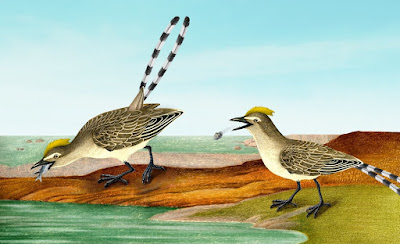 |
| Life reconstruction of the fish-eating enantiornithine bird, eating – and vomiting – habits. Illustration: SHI Aijuan |
SYSTEMATIC PALEONTOLOGY
AVES Linnaeus, 1758
ORNITHOTHORACES Chiappe, 1995
ENANTIORNITHINES Walker, 1981
PISCIVORENANTIORNIS, gen. nov.
Type Species:— Piscivorenantiornis inusitatus, sp. nov.
Etymology:— The generic name is derived from Latin ‘pisci’ and ‘vor,’ intended to convey ‘a fish-eating enantiornithine bird.’
PISCIVORENANTIORNIS INUSITATUS, sp. nov.
Etymology:— The specific name is from Latin ‘inusitatus,’ referring to the unusual cranial articular facet of the caudal cervical vertebra.
 |
| FIGURE 1. Photograph of the holotype of Piscivorenantiornis inusitatus, gen. et sp. nov., IVPP V22582. Scale bar equals 10 mm. |
 |
| Figure 3. A Sketch Reconstruction of the Fish-Eating Enantiornithine Bird Represented by IVPP V22582 |
Min Wang and Zhonghe Zhou. 2017. A Morphological Study of the First Known Piscivorous Enantiornithine Bird from the Early Cretaceous of China. Journal of Vertebrate Paleontology. DOI: 10.1080/02724634.2017.1278702
Min Wang, Zhonghe Zhou and Corwin Sullivan. 2016. A Fish-Eating Enantiornithine Bird from the Early Cretaceous of China Provides Evidence of Modern Avian Digestive Features. Current Biology. 26; 1170–1176. DOI: 10.1016/j.cub.2016.02.055
Fish-eating enantiornithine bird provides evidence of modern avian digestive features http://phy.so/381743208 via @physorg_com
World's oldest bird vomit heaved out in China https://www.earthtouchnews.com/discoveries/discoveries/worlds-oldest-bird-vomit-heaved-out-in-china/
---------------------------------------------------------------
روابط التحميل والمشاهدة، الروابط المباشرة للتحميل
او
شاهد هذا الفيديو القصير لطريقة التحميل البسيطة
كيف تحصل على مدونة جاهزة بآلاف المواضيع والمشاركات من هنا
شاهد قناة منتدى مدونات بلوجر جاهزة بألاف المواضيع والمشاركات على اليوتيوب لمزيد من الشرح من هنا
رابط مدونة منتدى مدونات بلوجر جاهزة بآلاف المواضيع والمشاركات في أي وقت حــــتى لو تم حذفها من هنا
شاهد صفحة منتدى مدونات بلوجر جاهزة بألاف المواضيع والمشاركات على الفيس بوك لمزيد من الشرح من هنا
شاهد صفحة منتدى مدونات بلوجر جاهزة بألاف المواضيع والمشاركات على الفيس بوك لمزيد من الشرح من هنا
تعرف على ترتيب مواضيع منتدى مدونات بلوجر جاهزة بآلاف المواضيع والمشاركات (حتى لا تختلط عليك الامور) من هنا
ملاحظة هامة: كل عمليات تنزيل، رفع، وتعديل المواضيع الجاهزة تتم بطريقة آلية، ونعتذر عن اي موضوع مخالف او مخل بالحياء مرفوع بالمدونات الجاهزة بآلاف المواضيع والمشاركات، ولكم ان تقوموا بحذف هذه المواضيع والمشاركات والطريقة بسيطة وسهلة. ــــــــــــــــــــــــــــــــــــــــــــــــــــــــــــــــــــــــــــــسلامـ.



